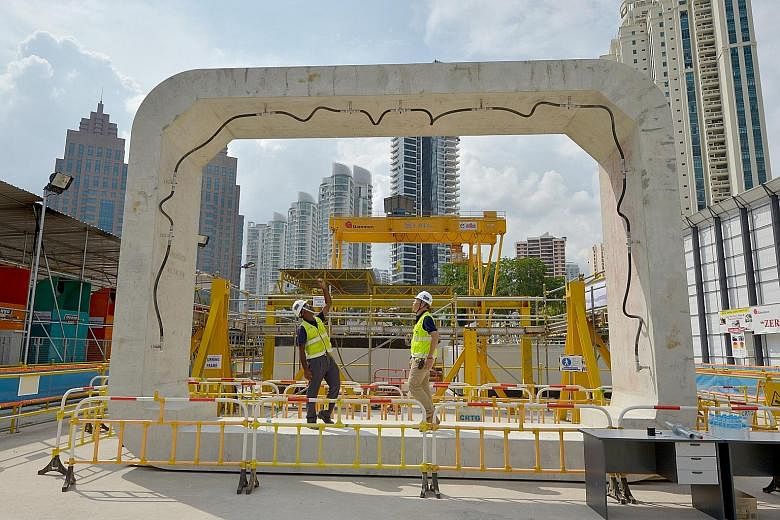The Land Transport Authority (LTA) is digging the first underground pedestrian walkway using a rectangular tunnel-boring machine, which could pave the way for speedier, cleaner and significantly less disruptive road and rail projects in the future.
The machine - which excavates rectangular, not circular, tunnels - was deployed on May 11 for an underpass at Havelock MRT station on the Thomson-East Coast Line.
Since the new method does away with the traditional cut-and-cover method of trenching a tunnel from above the ground, there is no disruption to surface activity.
The LTA has completed about 20 per cent of the 150m underground pedestrian walkway, which links the future station to residential and commercial developments.
Giving a project update yesterday, LTA project director Henry Foo said the new method costs four times as much as the cut-and-cover method. The latter, however, would have meant multiple diversions of road and human traffic, greater construction dust and noise, and a much longer project duration.

With the new method, the underpass will be completed in six to eight months, instead of three to four years using the older method.
The underpass is being constructed under sections of Zion and Havelock roads. Mr Foo said: "It is hard for people to appreciate the benefits of this new method if we don't tell them about the long roundabout way pedestrians would have had to walk if we had used the cut-and-cover method, the several stages of road diversion, and the noise and dust residents in nearby HDB blocks would have had to bear with."
Mr Foo said rectangular tunnel- boring machines are used extensively in China, where they are employed not only for underpasses but also for underground roads.
When the underpass at Havelock is completed some time in September, the machine will be dismantled and moved to build another underpass at Stevens interchange station.
In future, larger machines may be used to build MRT lines here. If so, they would be capable of boring a box tunnel large enough to accommodate a pair of train tunnels as well as stations along the line - significantly shortening the completion time of a new rail project and reducing disruption to the public.
The rectangular tunnel-boring machine was supplied by China Railway Engineering Equipment Group. It uses a set of six cutter heads arranged in a 7.62m-by-5.65m rectangular frame. As it excavates, a compound is injected around it to stabilise the soil. Concrete box rings, which weigh 47 tonnes each and are cast on site, are then lowered into the tunnel and pushed into place by giant hydraulic thrusters.
On average, one box ring is put in place per day. So far, 21 of the 93 rings needed to complete the underpass are in place.


